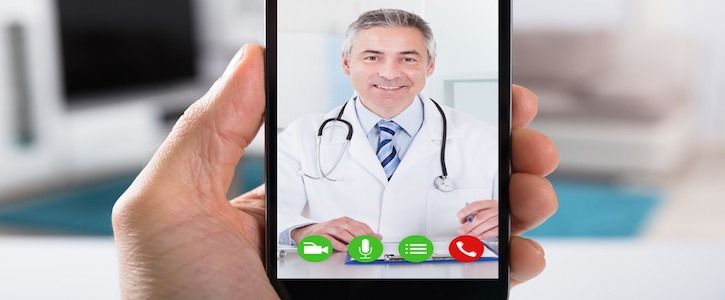- Politics
- Diversity, equity and inclusion
- Financial Decision Making
- Telehealth
- Patient Experience
- Leadership
- Point of Care Tools
- Product Solutions
- Management
- Technology
- Healthcare Transformation
- Data + Technology
- Safer Hospitals
- Business
- Providers in Practice
- Mergers and Acquisitions
- AI & Data Analytics
- Cybersecurity
- Interoperability & EHRs
- Medical Devices
- Pop Health Tech
- Precision Medicine
- Virtual Care
- Health equity
Patients, Clinicians Satisfied with Telehealth for Follow-Up Care
Clinicians and patients reported scheduling timely follow-up virtual visits was easier than office visits.

Thumbnail has been cropped and resized. Courtesy of www.careonlocation.com.
A study published in the American Journal of Managed Care found that 52.5 percent of clinicians reported higher efficiency in a telemedicine visit compared to traditional office visits.
The study also found that 62.9 percent of patients and 59 percent of clinicians reported no difference in the overall quality of the virtual visits versus traditional office visits.
A majority of clinicians (70.5 percent) also believed that virtual visits were better than office visits for timely scheduling of patient appointments. And 79 percent of the patients felt that it was easier to find a convenient time for a follow-up telemedicine visit than a traditional office visit.
>> READ: How UPMC Is Bringing Enhanced Telemedicine Services to the Grocery Store
As cutting-edge technology continues to change developers' and physicians' approaches to medicine, telemedicine can be useful for patients and physicians alike.
Researchers at Massachusetts General Hospital set out to see how both patients and physicians perceive the value of telemedicine visits.
The team surveyed 426 established patients at the hospital and 74 physicians. Of the people given surveys, 254 patients and 61 physicians completed them.
Survey questions touched on technology and communication quality, visit quality and experience, patient time and costs and willingness to pay for virtual video visits.
Most patients surveyed (94.5 percent) found that due to travel time to get a traditional appointment, virtual visits were better.
“With a telehealth visit, 95 percent of the time spent by the patient is face-to-face with the doctor, compared to less than 20 percent of a traditional visit, in which most time is spent traveling and waiting,” said senior author Lee Schwamm, M.D., director of the Massachusetts General Hospital Center for TeleHealth.
Clinicians in five specialties — psychiatry, oncology, cardiology, neurology and primary care — were trained to properly carry out a virtual video visit. Participating patients received education, instruction and phone-based technology support and testing for the installation of the video visit software. Patients were also not charged insurance copayments for the visit.
It was revealed that 83.5 percent of patients surveyed responded with “yes, definitely” or “yes, somewhat” when asked if they would pay a copay of $10 to $25 for a virtual visit. Almost 60 percent responded with one of those two answers if the copay was $26 to $50.
When asked to rate the virtual video visit on a 10-point scale, 68 percent of patients rated the visit a nine or 10. Lower ratings were generally over concerns about technical issues patients experienced during the first use of the system.
Overall, 82.3 percent of patients responded “yes, definitely” to whether they would recommend virtual video visits to their family and friends.
While clinicians did caution that telemedicine visits are not appropriate for all patients in all situations, the data collected by the research team showed a high degree of both patient and clinician satisfaction.
If more telemedicine initiatives get implemented, clinicians will be able to expand their reach to help even more patients.
Get the best insights in healthcare analytics directly to your inbox.
Related
Telehealth Low Adoption Have You Shaking Your Head? Here's Why It Makes Sense
The Clinical Divide: Leveraging Telemedicine to Treat Mental Health
23andMe and Lark Health Collab for Personalized AI Digital Health Program
